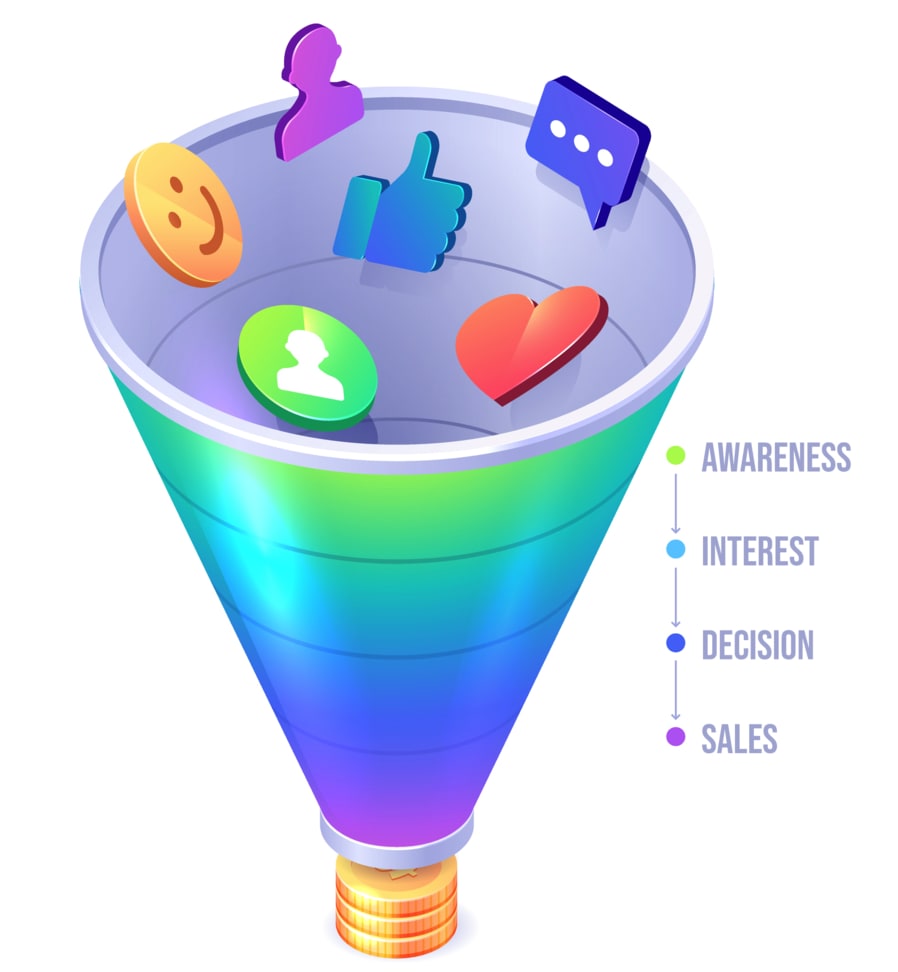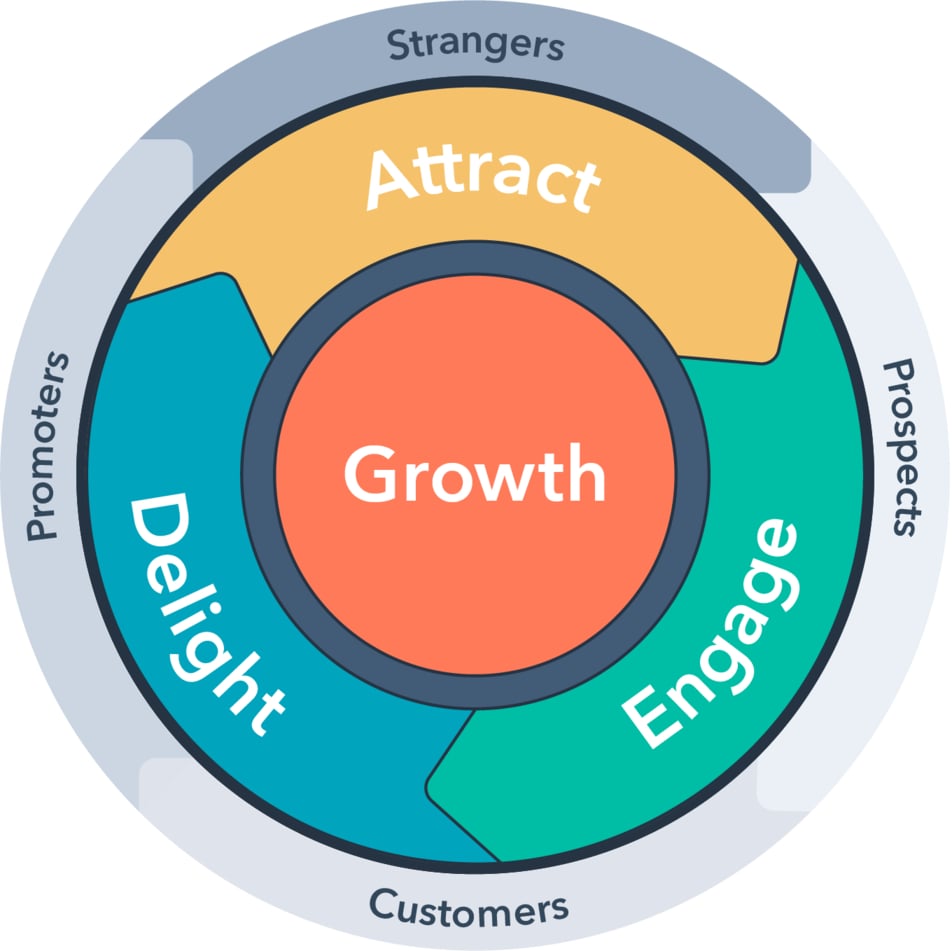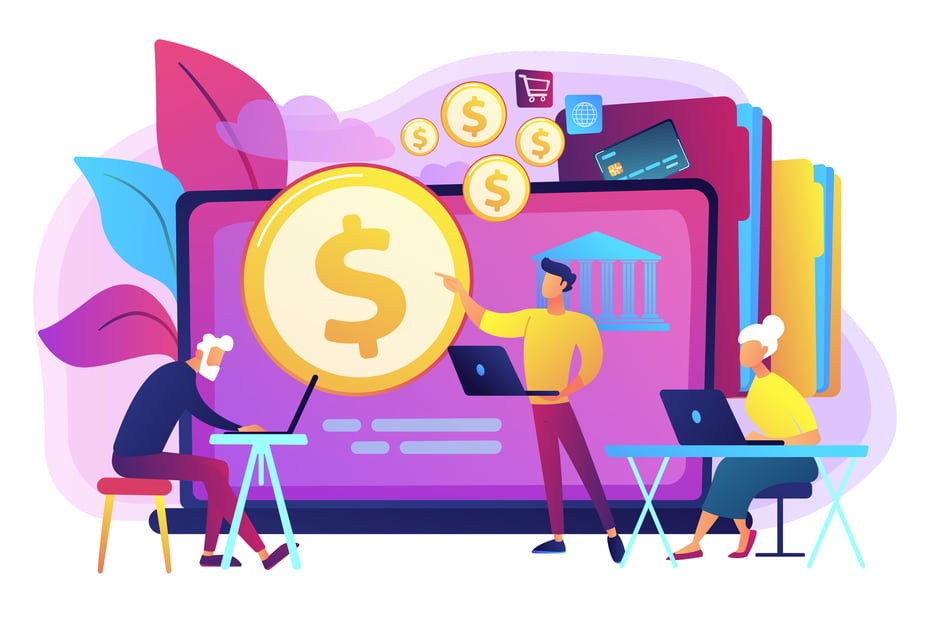The Flywheel thinking model improves your budget by increasing focus on value-added ideas that better align with your purpose. Often, flywheel strategies are applied to the marketing department, sales team, or support teams. From a marketing perspective, it's used to help companies shift their mentality to growth in customer happiness rather than simply high-risk short-sighted campaigns. From a sales perspective, it's about recognizing how to turn new prospects into loyal advocates of the brand. A customer service team uses the flywheel to drive customer happiness in a way that develops successful customers while taking suggestions for product improvements. The Flywheel thinking model can also be applied in other departments. Whether you are just starting or have a long history, our goal here is to discuss how these methods can focus your finances and overall efficiency. Companies that are willing to apply flywheel thinking are dedicated to creating lifetime value, customer advocacy, all while improving the company's budget at the same time.
What is the Flywheel Model?
A flywheel approach is similar to a funnel model often seen in sales or marketing departments. Where a funnel represents the different stages of the customer journey, the central theme of the wheel is customer satisfaction and how it fuels growth. Top marketers and sales leaders believe existing customers are often a more reliable means of growing revenues than new customers and have been refocusing efforts to better serve this segment. Many have decided that traditional funnels are outdated and have switched entirely to a flywheel model. Flywheel success is created by applying force in the areas of maximum impact. Forces are programs that accelerate the flywheel such as offering more customer discounts or creating innovative ways to better solve customer problems. Friction on the other hand slows down a company's strategy in that it works against the customer. In this way, customer success can be aided by your ability to reduce friction. Finding ways to reduce frustration for both loyal and potential customers is the key. Less friction creates more business opportunities in the same way as when you add force you accelerate the flywheel.
Flywheel Model vs Sales Funnel
For years businesses built strategies around marketing or sales funnels. Today, customer referrals, word-of-mouth, and reviews have become a primary influence in buying decisions. Independent research is often done before speaking to a member of your sales team. This causes problems within the funnel and overall budget decisions. This isn't to say that funnels don't work anymore, and it cannot be said that there are certainly correct answers. These changes in mentality engage new customers more effectively than using a traditional marketing funnel. The flywheel model represents a more comprehensive, unified form of representing the forces that affect your company's growth. A flywheel is a mental model that combines these customer-centric forces while focusing your budget to serve growth opportunities.

Why is the Classic Sales Funnel being retired?
The traditional sales funnel visualizes the steps of the buyer journey while also predicting that fewer people will take action at each step. The funnel approach relies on the previous step to push a prospect closer to a decision. There is a risk that a decision isn't made until the final stages of the funnel if at all and many are lost along the way. To address these doubts, a flywheel allows for a comprehensive representation of the customer journey in a changing marketplace to focus solely on managing the customer experience. Funnels also are not particularly team-specific. Whereas flywheels are designed to cover the entire customer interaction across departments. The modern consumer wants to gather their knowledge and to make their own buying decisions without being pushed in a particular direction. The flywheel caters to this style of consumerism by putting your clients at the center and putting the responsibility onto your sales, marketing, and product development to develop customer-centric practices.

Flywheel Model Factors
• Attract: This will attract new business and paying customers to your brand. Provide relevant content to the right audience, don't just attempt to make as much money as possible in a short time. Not only does this help your marketing team gather information and attract new prospects but can aid your overall budget. • Engage: Engagement is achieved by creating a strong relationship with clients throughout the buyer's journey. A short-term marketing ploy is just that, short-term. Businesses should understand their clientele, their motivation, and their motivational pain points. If companies understand the market, they can supply the solutions they are looking for and create repeat sales. • Delight: Delight brings joy along your customer's journey and makes sure you and your customers are on the same page which drives growth. It involves offering a compelling experience for which to promote your brand. This empowers people to become advocates.

Applying Flywheel Thinking to Your Company's Budget
If you're allocating resources to areas that drive customer experience, you're already on the right track. It’s important here to allocate based on providing superior customer responsiveness and efficiency. Marketing and sales should always find ways to attract, engage, and delight customers. When you have the flywheel spinning without much friction, growth will follow. However, if you feel that there is some friction, you can invest in other areas that drive customer experience. More customer discounts or loyal programs as examples can grease the wheels enough to relieve any aforementioned friction. It's important to note that there is no single correct answer as this will depend on your business. Investments don't need to be evenly distributed but channeled into whatever drives your customer's happiness. Let's look at four instances in which we can directly apply flywheel thinking to your budget and financial strategy: • Sufficient Start-up Capital: You likely only have a small amount of money to invest in your company. Investments are made so the business can have a continuous flow of income. During this stage is where you must convince investors that your flywheel will deliver sufficient profit to sell your idea. Forget about setting up equal proportions for each department, but focus on solving problems and frustrations. • A Large and Efficient Flywheel: The wheel moving in a full circle represents the flow of profit from customer to business and back again with products or services being bought by customers. You might think that in this stage your business may be able to focus on marketing campaigns and sales strategies to create a larger audience so more profits can be generated from customers. However, it is easier for businesses during this stage to further align marketing and sales to focus on improving and selling the experience to create or maintain loyalty.
• The Lean Startup Approach: A company must be able to provide good value for their customers so they can continue supporting the business. Recognizing how important it is to retain as many clients as possible because clients who stop buying from you will hinder your growth just as much, if not more, as attracting new ones would help it. The lean startup approach helps businesses protect the company's budget by understanding if their flywheel isn’t creating enough income. You may need to put more effort into creating a better product or service than what they currently have. Customer lifetime value is vital; keeping loyal customers happy is a process and not something that begins and ends with one purchase, relies on cheap marketing techniques, is evenly distributed, or attempts to make as much money as possible quickly. • Isolated Creative Thinkers Working Independently with a Shared Vision: A company’s flywheel is the means for generating revenue and profit and streamlining a company's budget. It can also be used to keep track of growth throughout all departments. Where to spend more time and resources for improvements in each department and whether each should be set up to have equal proportions are priorities. The wheel should be shared by everyone working together as a team and not only the people who work directly with customers to create a better product or service. Keeping track of your wheel allows you to switch things up every few years so it doesn’t become outdated.




